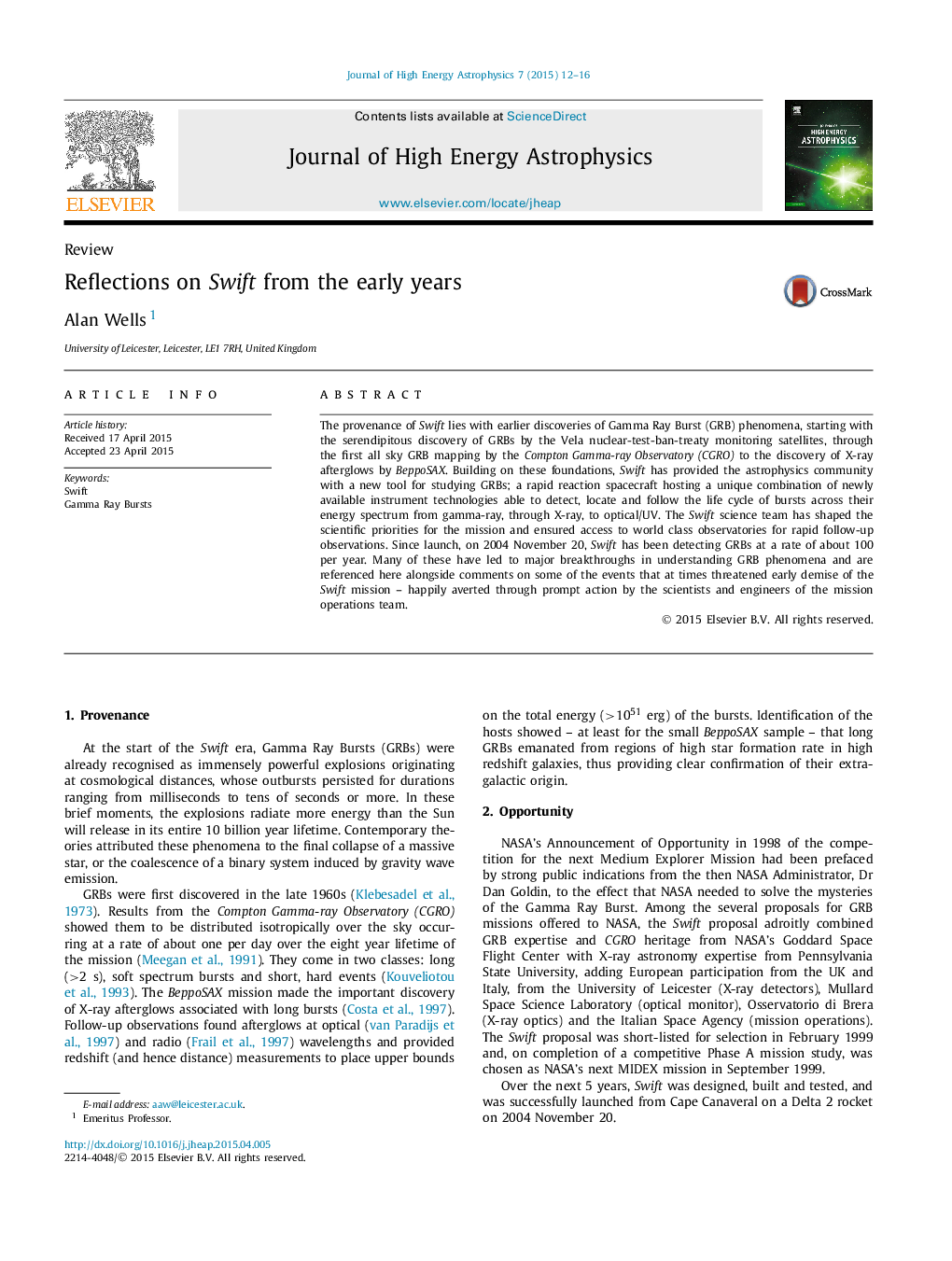| Article ID | Journal | Published Year | Pages | File Type |
|---|---|---|---|---|
| 1778628 | Journal of High Energy Astrophysics | 2015 | 5 Pages |
The provenance of Swift lies with earlier discoveries of Gamma Ray Burst (GRB) phenomena, starting with the serendipitous discovery of GRBs by the Vela nuclear-test-ban-treaty monitoring satellites, through the first all sky GRB mapping by the Compton Gamma-ray Observatory (CGRO) to the discovery of X-ray afterglows by BeppoSAX. Building on these foundations, Swift has provided the astrophysics community with a new tool for studying GRBs; a rapid reaction spacecraft hosting a unique combination of newly available instrument technologies able to detect, locate and follow the life cycle of bursts across their energy spectrum from gamma-ray, through X-ray, to optical/UV. The Swift science team has shaped the scientific priorities for the mission and ensured access to world class observatories for rapid follow-up observations. Since launch, on 2004 November 20, Swift has been detecting GRBs at a rate of about 100 per year. Many of these have led to major breakthroughs in understanding GRB phenomena and are referenced here alongside comments on some of the events that at times threatened early demise of the Swift mission – happily averted through prompt action by the scientists and engineers of the mission operations team.
